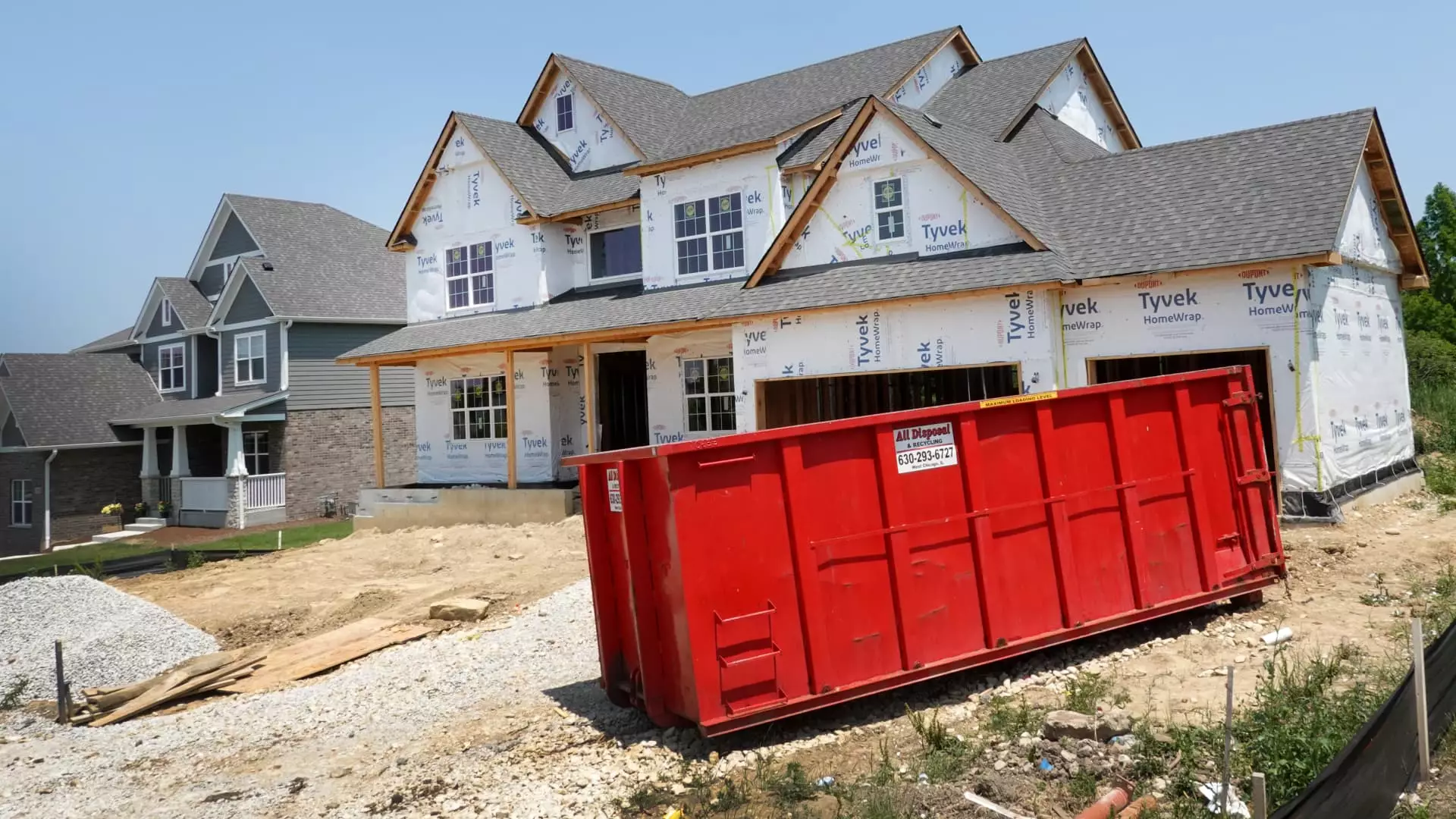In a move reminiscent of historical trade conflicts, President Donald Trump’s administration has set its sights on tariffs that could dramatically inflate the costs of new homes. According to the National Association of Home Builders (NAHB), these tariffs could raise the cost of building a typical new single-family home by as much as $10,000. This staggering figure might not just be a mere statistic; it represents a devastating blow to the already fragile affordability landscape for American homebuyers. As a society that prides itself on economic opportunity and the American Dream, we must critically examine the implications of such protective measures, which may ultimately impact the very people they are purported to benefit.
Trade protectionism might have initially appeared as a means to bolster our domestic industries, but in reality, it often leads to increased costs being passed down to consumers. The NAHB’s forthcoming survey may provide more data, but their early estimates already suggest a serious risk of hindering access to homeownership for many families. The irony of a policy claiming to support American workers while simultaneously elevating consumer costs is deeply troubling, yet it reflects the kind of disconnect that often arises in populist rhetoric.
The Cost Breakdown: Who Bears the Burden?
The landscape of construction materials is shifting beneath the feet of homebuilders, particularly in light of tariffs on imports from our neighboring countries, Canada and Mexico. Softwood lumber—a crucial component of home construction—primarily hails from Canada, while gypsum, a key ingredient in drywall, comes from Mexico. Trump’s tariffs, which have already been implemented with respect to Chinese imports, further complicate matters by imposing additional costs on essential building materials. For D.R. Horton, one of the largest homebuilders in the nation, approximately 20% of its lumber is sourced from Canada. This reliance illustrates the intricate web of supply chains that could be decimated by fluctuating trade policies.
For builders like K.B. Home, who claim to source a majority of their materials domestically, it may seem that they would evade the immediate sting of these tariffs. However, the reality is more convoluted: an increase in demand for domestic materials due to disrupted international supplies often leads to inflated prices across the board. A notion of economic solidarity becomes strained when the very measures intended to protect American jobs have the potential to swell material costs and, by extension, make homes even less affordable.
The Investor Perspective: An Eroding Confidence
The ongoing uncertainty related to Trump’s tariffs has sent ripples through the real estate market. The SPDR S&P Homebuilders ETF has plummeted by over 22% since its recent peak, showcasing the growing apprehension among investors regarding the fallout from these taxes. Identification of the exact damage is somewhat elusive, particularly when variable policies and incomplete data complicate forecasting. As Jessica Hansen of D.R. Horton pointed out, the unpredictable nature of tariffs makes it challenging for builders to navigate this tumultuous environment.
Homebuilders are finding themselves caught between escalating costs and financial scrutiny, leading to a reconsideration of their operational strategies. The focus on renegotiating supplier contracts in response to cost inflation is a necessary, albeit arduous, undertaking. As companies grapple with gross margin compression, the future looks increasingly precarious for builders.
The Broader Economic Implications
Beyond homebuilders themselves, the implications of Trump’s tariffs extend to surrounding communities and economies. With costs on construction material predicted to rise between 6% and 14%, as indicated by Zonda’s chief economist Ali Wolf, those in border states face the additional threat of a diminished workforce. Heightened fears surrounding immigration could deter laborers from crossing the border, leading to labor shortages that hamper construction timelines and drive costs even higher.
Moreover, as builders attempt to adapt to constant policy changes, a fog of uncertainty clouds the future of real estate development in the U.S. The delicate balance between deregulation and the repercussions of protectionist policies leads to an unsettling question: what kind of future do we wish to construct, and at what hidden costs?
In an era marked by rising interest rates and dwindling inventory, the weight of these tariffs could become a defining crisis for homeownership in America. If we’re unable to reconcile the aspirations inherent in the idea of home ownership with the reality of elevated prices, the American Dream may remain just that—an elusive dream rather than a realizable objective.


Leave a Reply